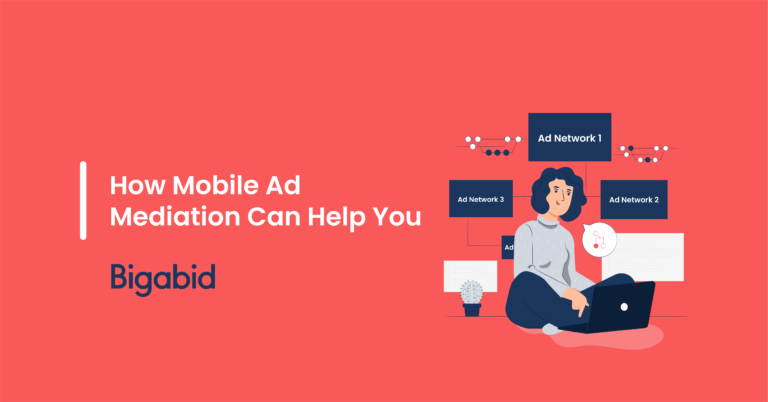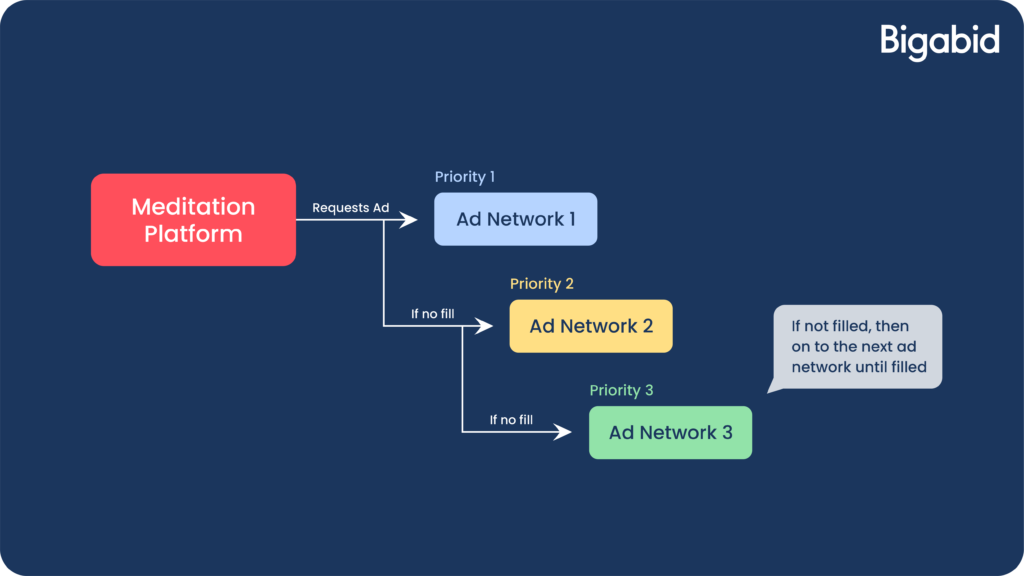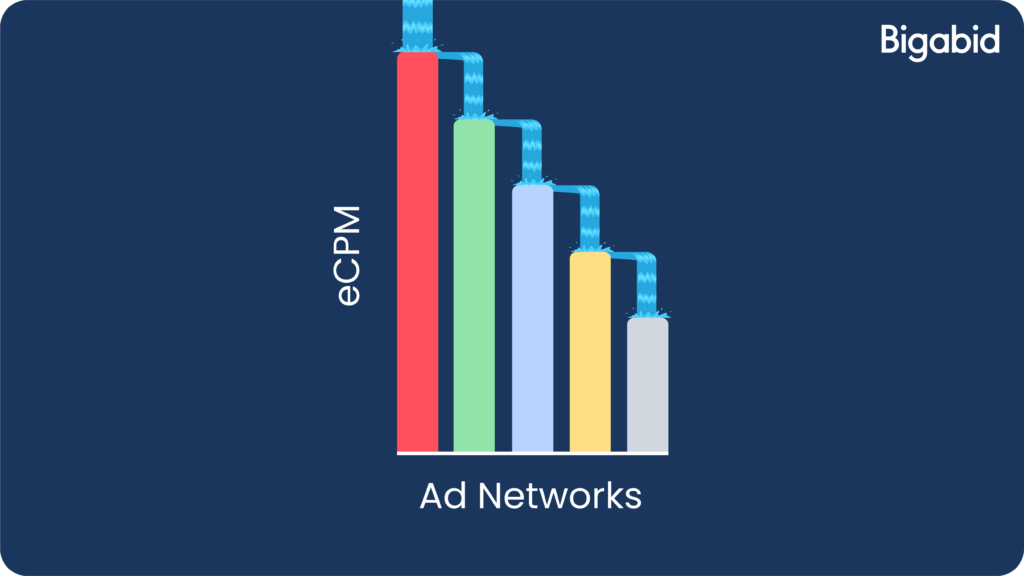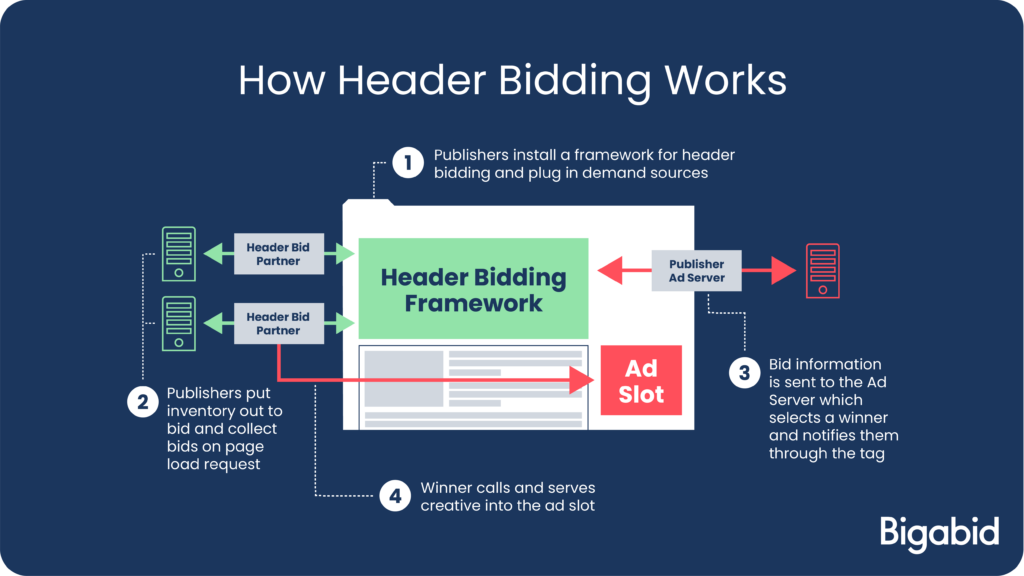
Mobile ad mediation is a mobile app monetization solution that allows app developers (publishers) to set, manage, and optimize multiple mobile ad networks with only one SDK (software development kit) integration.
Without it, publishers need to manage each ad network through their individual SDKs and platforms, which can be in the hundreds. Having just one centralized platform streamlines reporting, optimization, and updates.
In terms of advertising, ad mediation platforms help publishers sell more inventory by having ad networks bid against each other. The publishers can then accept the highest bid, reach optimal fill rates, and therefore, increase CPMs (Cost Per Mile).
Mobile Ad Mediation can send ad requests to multiple ad networks helping publishers find the best network to fill their inventory. All of the ad networks are ranked in the order of preference set by the publisher. Then, the mobile ad mediation platform selects the ad network with the highest ranking and determines whether or not it can fill the ad request. If not, the mediation platform selects the following ranked ad network, and so on, until it fills an ad request. The ad mediation platform ensures that every ad request finds the best ad network based on the publisher’s preferences e.g. ROI or eCPM.

In simple business terms, mobile ad mediation platforms allow multiple ad networks access to a mobile app’s inventory, where ad networks must compete for their ad to be served. Higher competition among ad networks means competitive eCPMs and more ad revenue for app developers.
Ad mediation platforms sell ad space in two primary ways: waterfall and header bidding.
Waterfall bidding (aka daisy-chaining) starts with a chain of ad networks/exchanges arranged in order of their preference or any given publisher from top to bottom. The network/exchange performance is typically rated based on CPM, fill rate, latency, etc.. Ad impressions are passed from network to network, from top-rated to bottom-rated ones, until they’re sold.
The CPM decreases as an impression falls down the waterfall, but so does the inventory. The waterfall attempts to ensure that no inventory is left unsold while hopefully procuring the publisher the best possible price. This way, publishers mainly use this technique to sell remnant ad inventory.
In the early days, publishers used to sell their best ad inventory as direct deals, but they were left with lots of ad inventory that wasn’t interesting to buyers. So they developed the programmatic waterfall to solve this problem.

Learn more in Waterfall vs. Header Bidding, Everything You Need to Know
Traditionally, mobile ad mediation platforms use a waterfall approach to optimize ad networks by prioritizing according to the total potential ad revenue. First, app developers request ads to fill, and the highest performing ad network is called until its ad bidding pool is completely used up. Next, the ad mediation moves on to the next best-performing ad network until its pool is used up, and so on.
Here are the basic steps:
Header bidding is a true auction. Publishers sell their inventory through multiple ad exchanges (auction houses), giving numerous demand-side Partners (buying agents) the option to bid on that inventory (lots) simultaneously. And unlike the set prices in both Charles the 1st’s auction and a programmatic waterfall, in programmatic header-bidding, the highest bid always wins, just like Edward’s ground-breaking art auction.
Want more details? The core of head-bidding is the header code that publishers place in the header. Each time someone visits an app, it requests an ad to be served. The server then sends the request to an SSP (supply-side platform), which allows publishers to sell inventory programmatically. Then the SSP pushes the request forward to an ad exchange, the marketplace that serves as a trading center between supply and demand partners. The ad exchange then forwards it to a DSP (demand-side platform), the advertiser’s ace in the pocket ML (machine-learning) used to manage their user acquisition or retargeting campaigns. The DSP analyzes all the relevant data and matches the inventory to the advertiser via precision targeting. Finally, the Advertisers bid on their targeted audience. The one who bids the highest price wins. This all happens, more or less, simultaneously.
Since header bidding reaches multiple demand partners in RTB (real-time bidding), publishers maximize their yield for their ad inventory by selling it at the highest price. The nitty-gritty is that header bidding allows publishers to offer their premium ad inventory without the risk of underselling it.
What makes inventory premium? Learn more about ad creatives in Creative Personalization.

Today, mobile ad mediation is increasingly turning to header bidding. While waterfall bidding works through one ad network at a time, header bidding sends the open ad space to many all at once, increasing response time and delivering a mucn more transparent bidding process for all sides.
To read more about Bigabid’s commitment to transparency, check out Partnering with Transparency.
Many ad mediation platforms offer a wide range of bidding options, reporting features, and integrations. When finding the right ad mediation platform, use these guidelines:
At Bigabid, we work with some of the leading ad mediation platforms. If you want to learn more about how we can improve your ROAS by integrating the right mobile ad mediation platform for you, please get in touch.